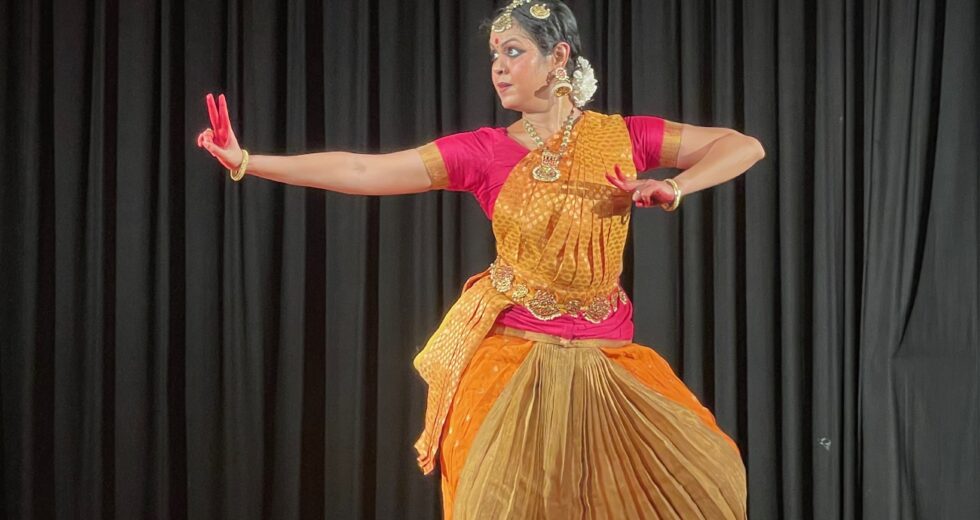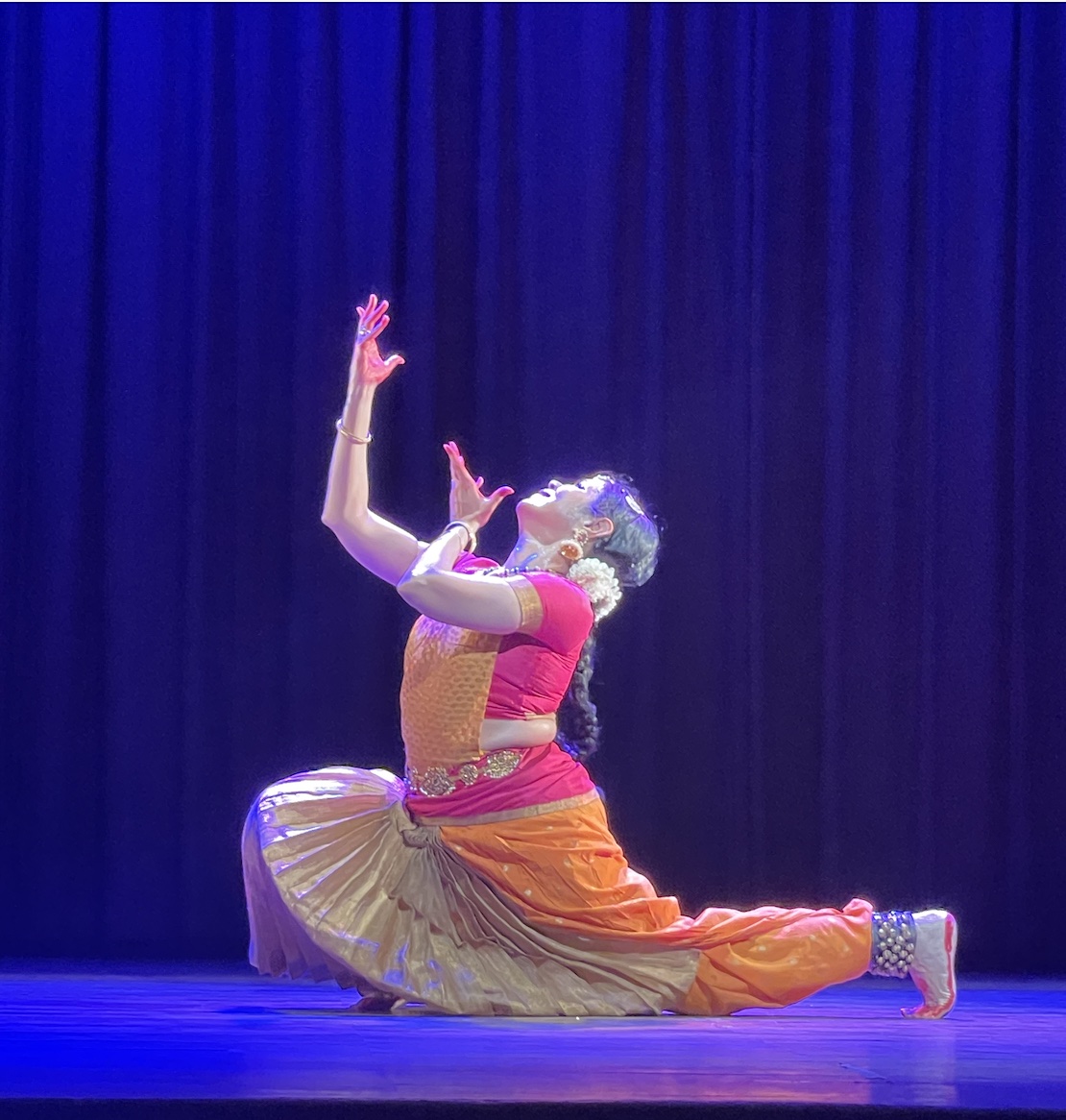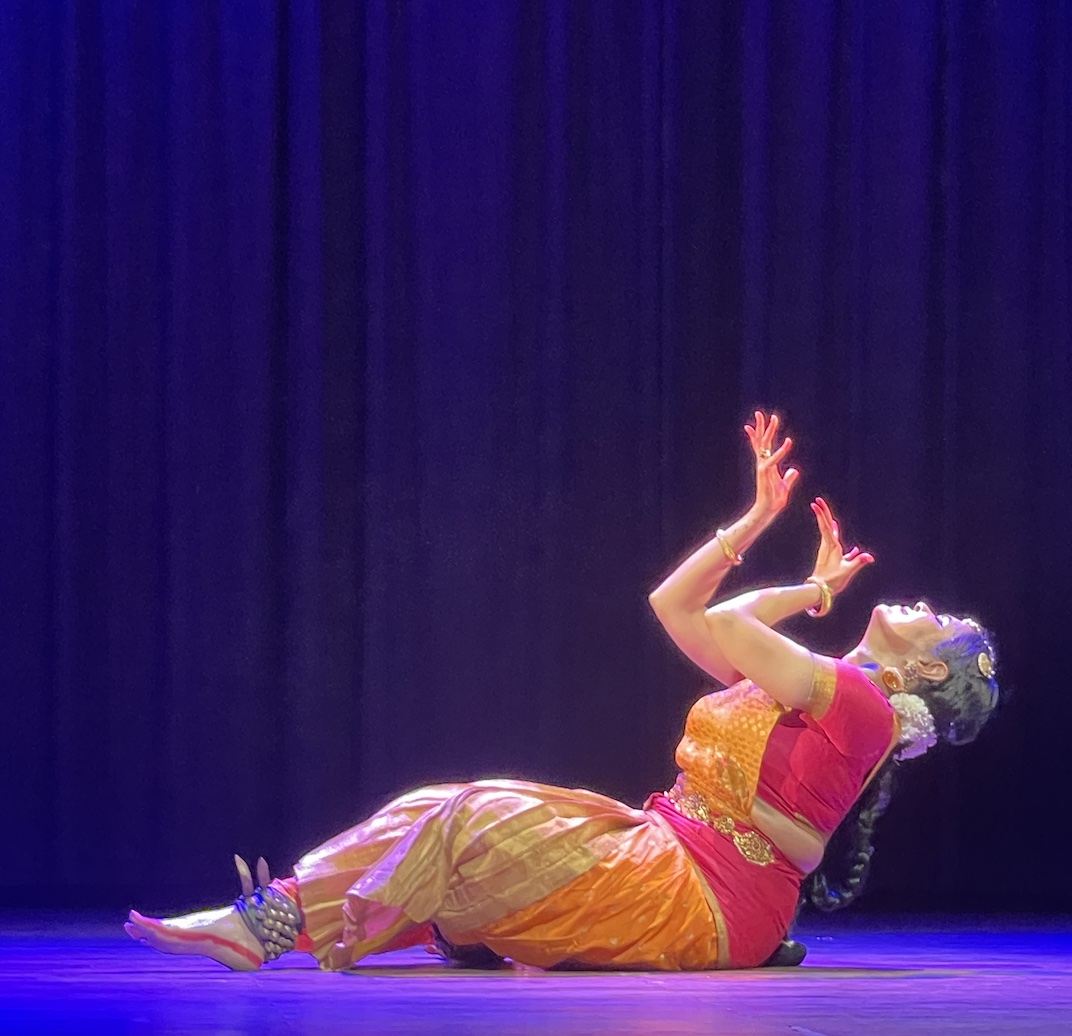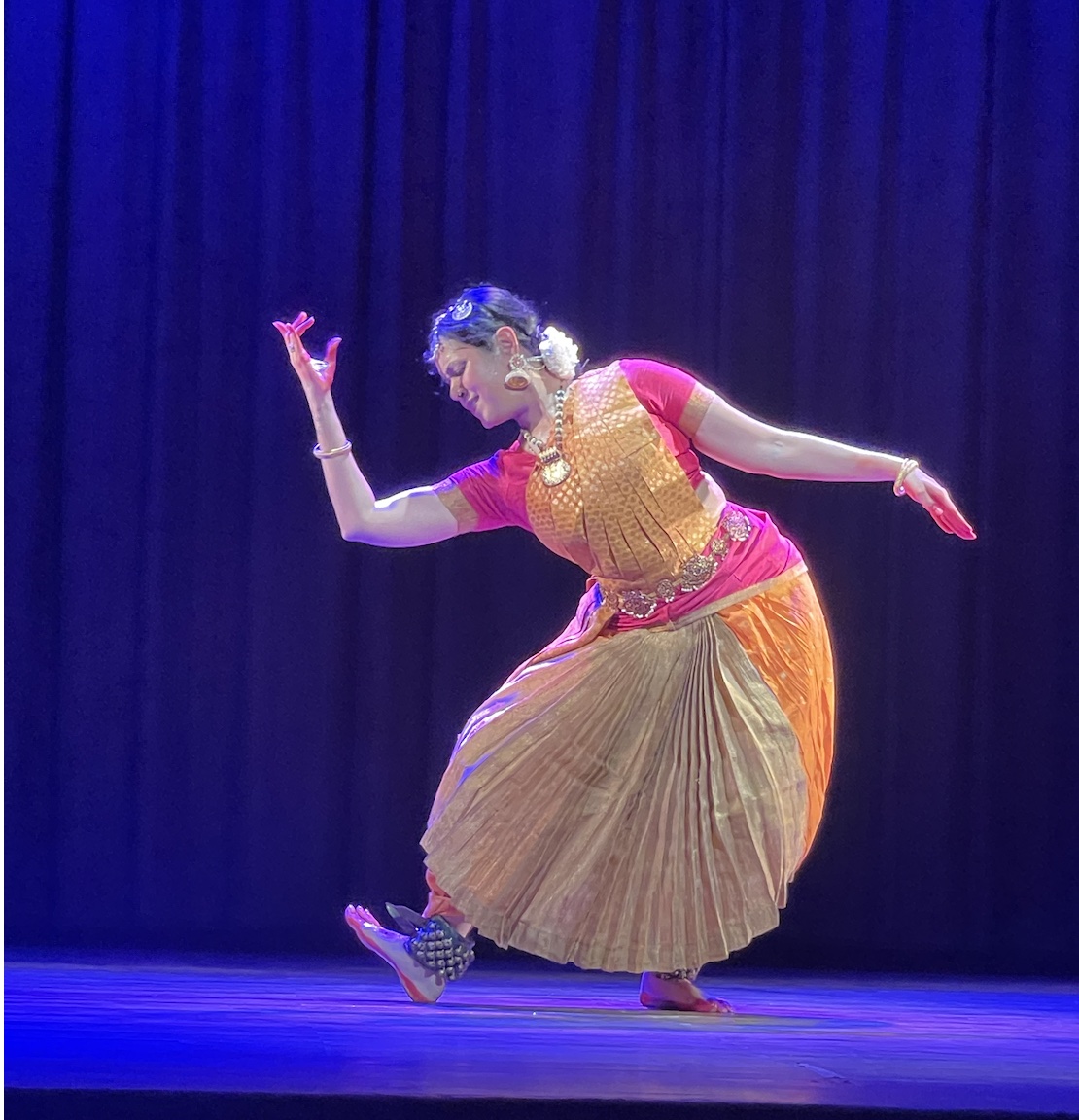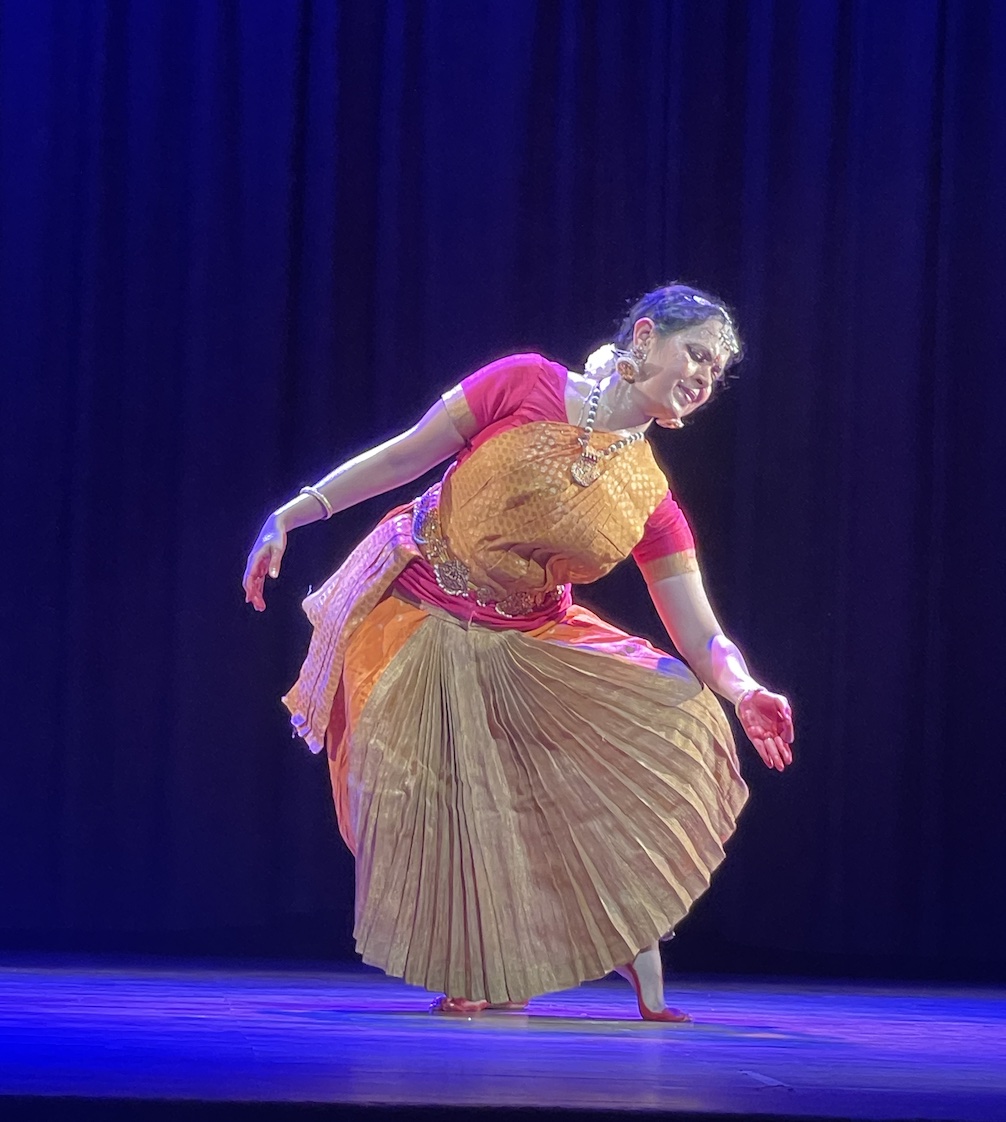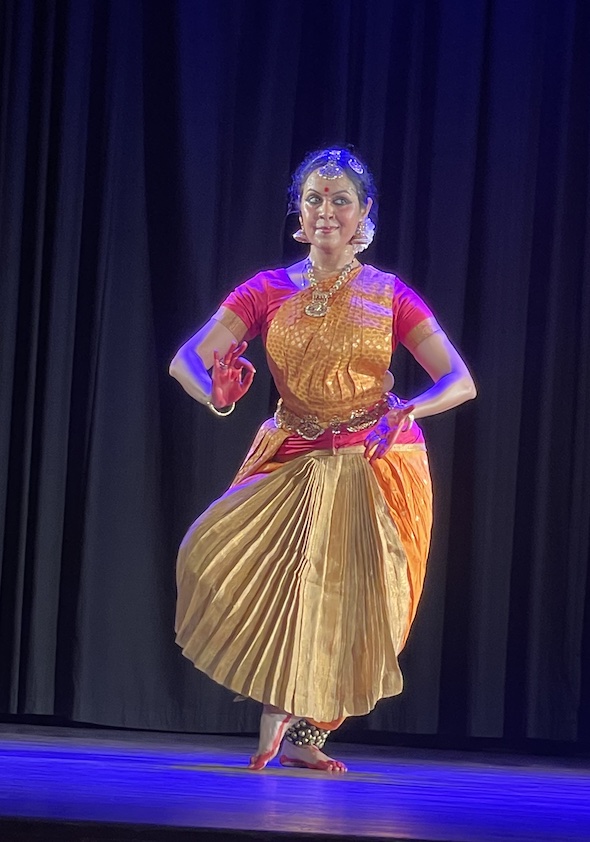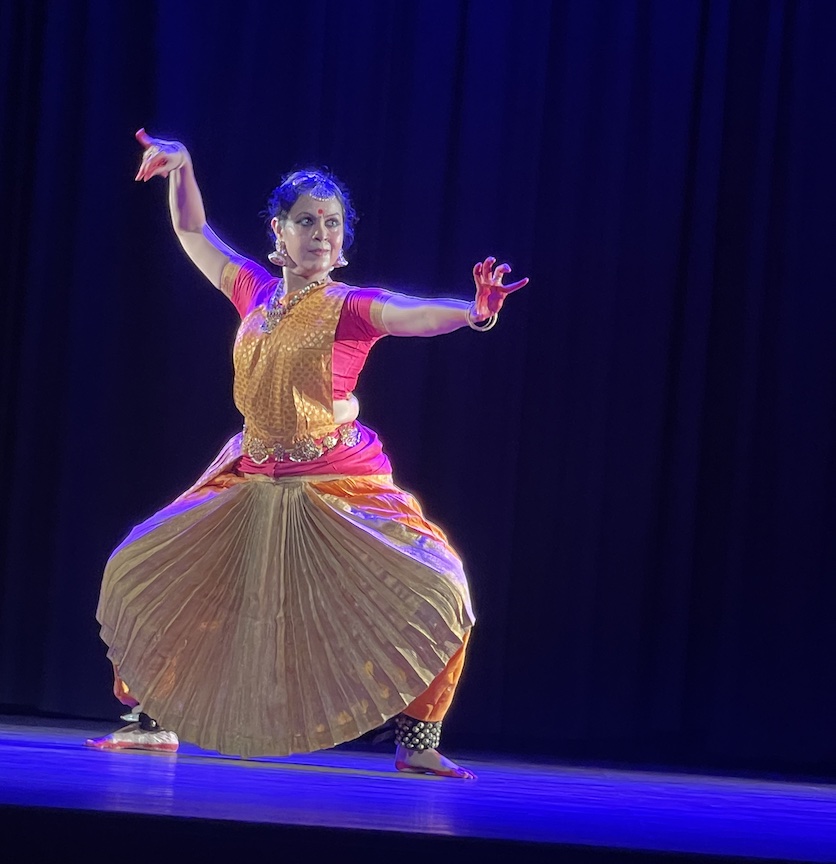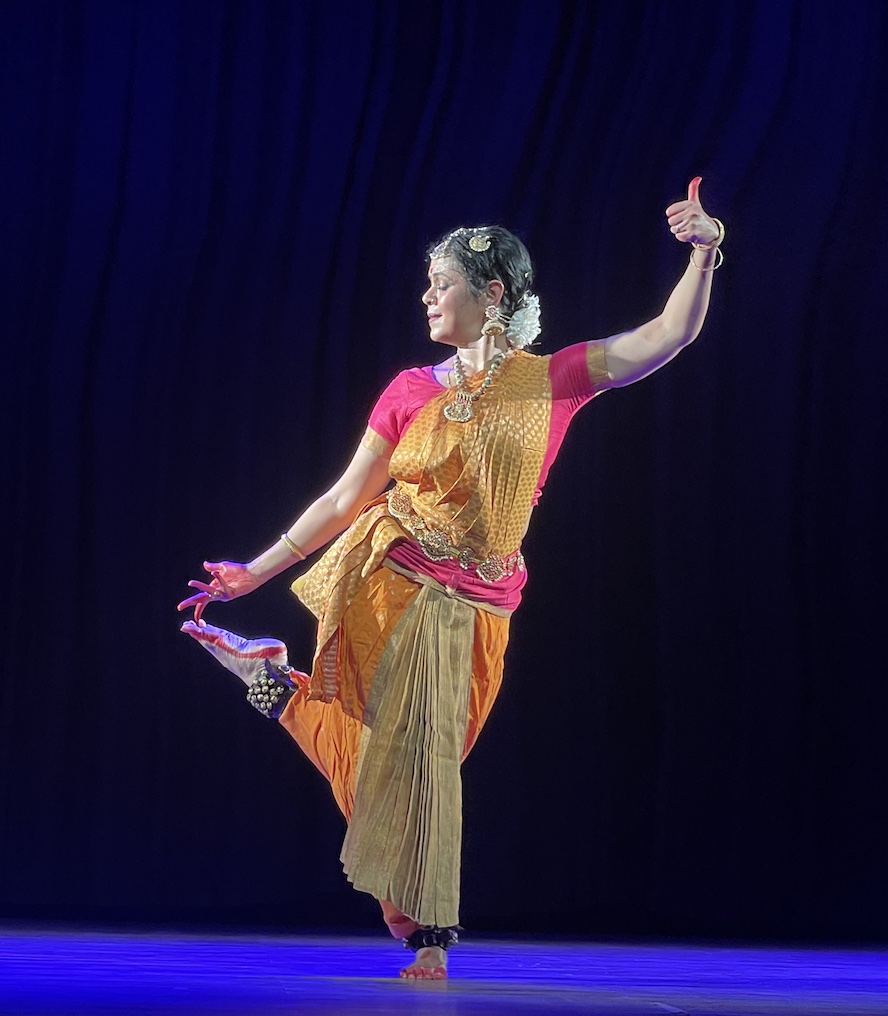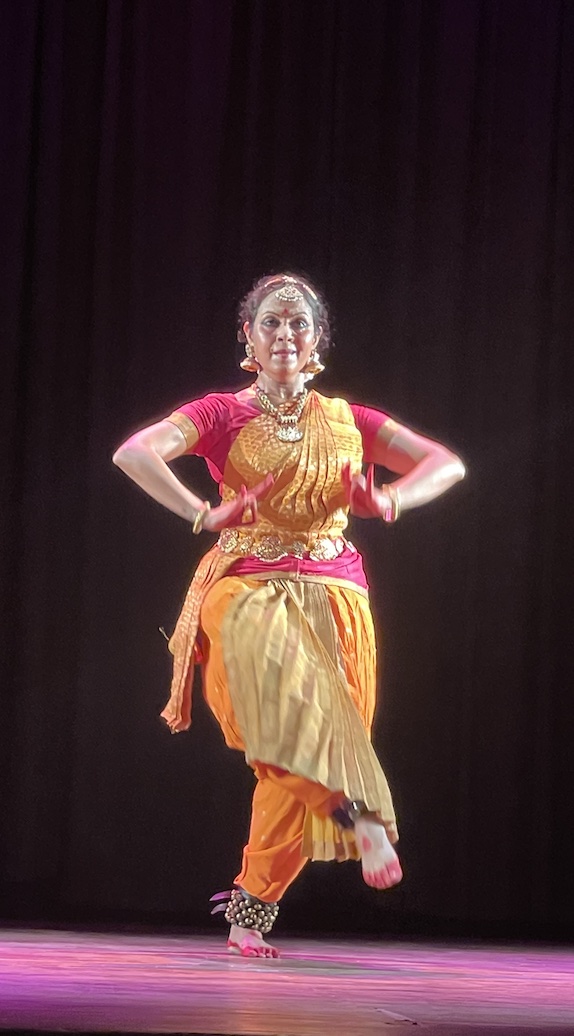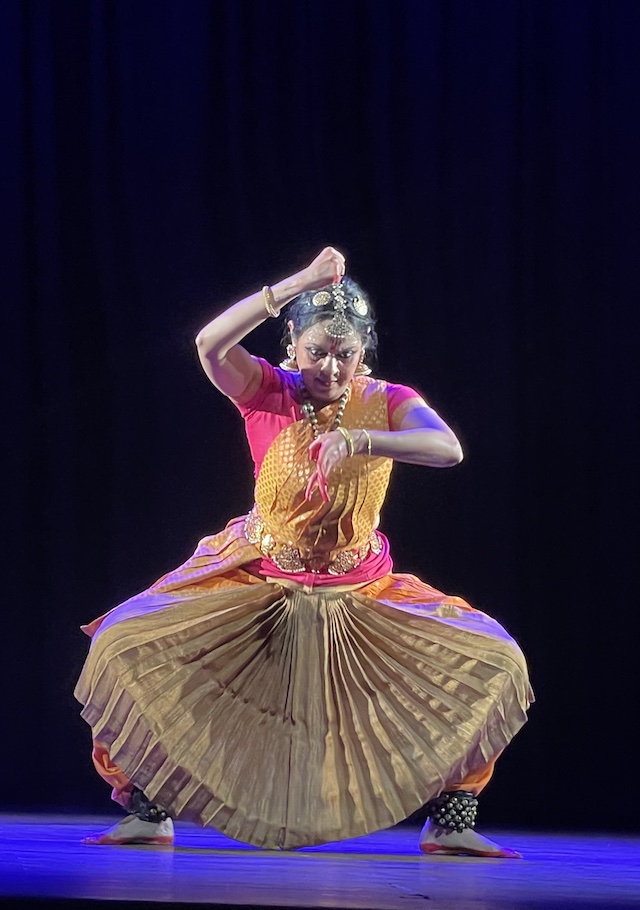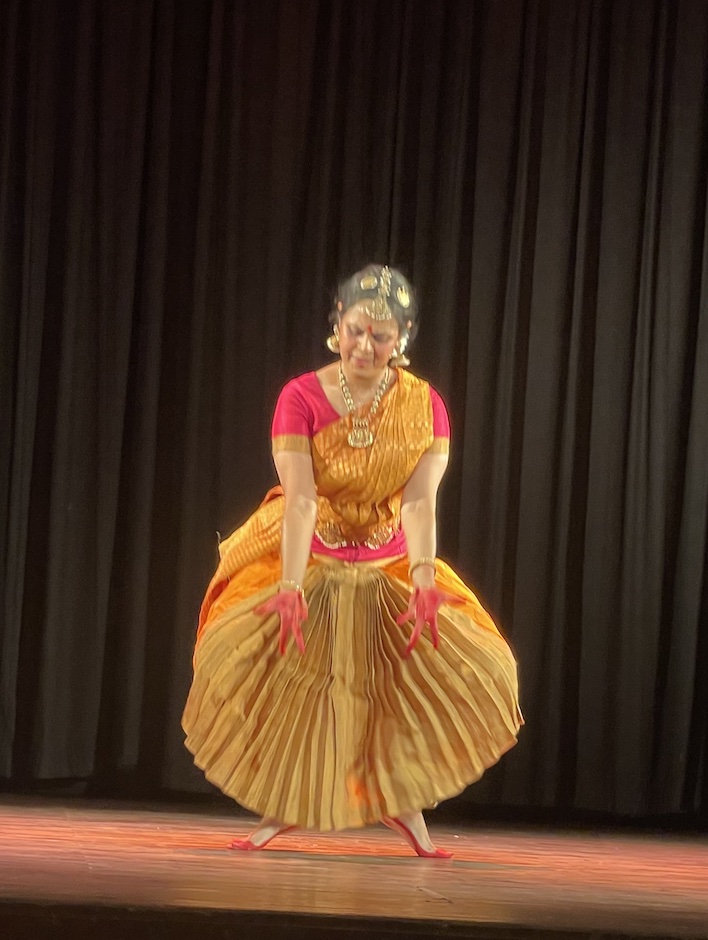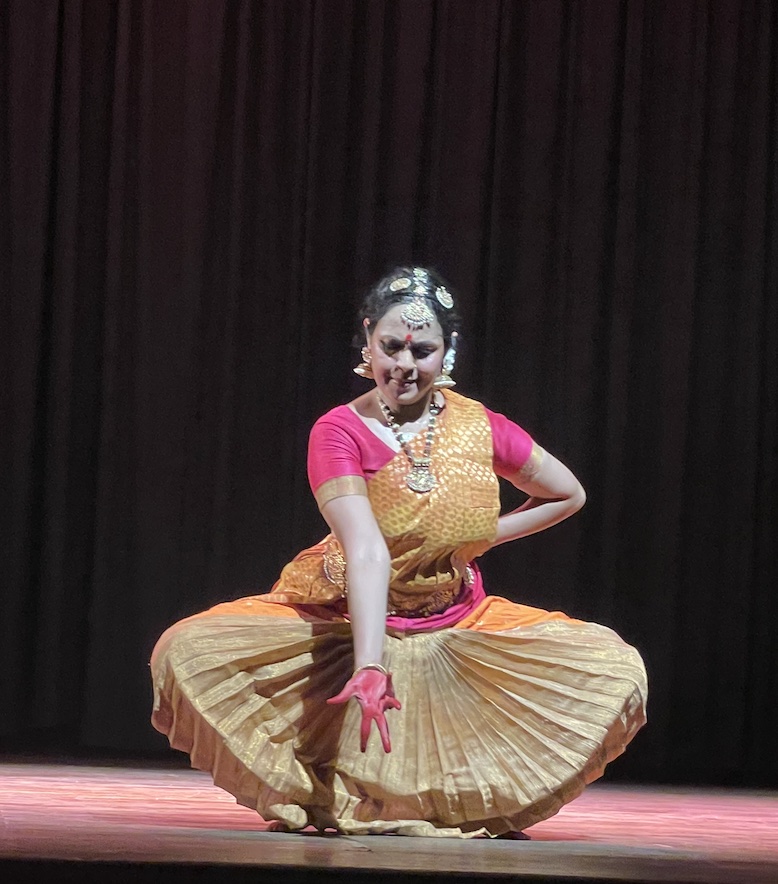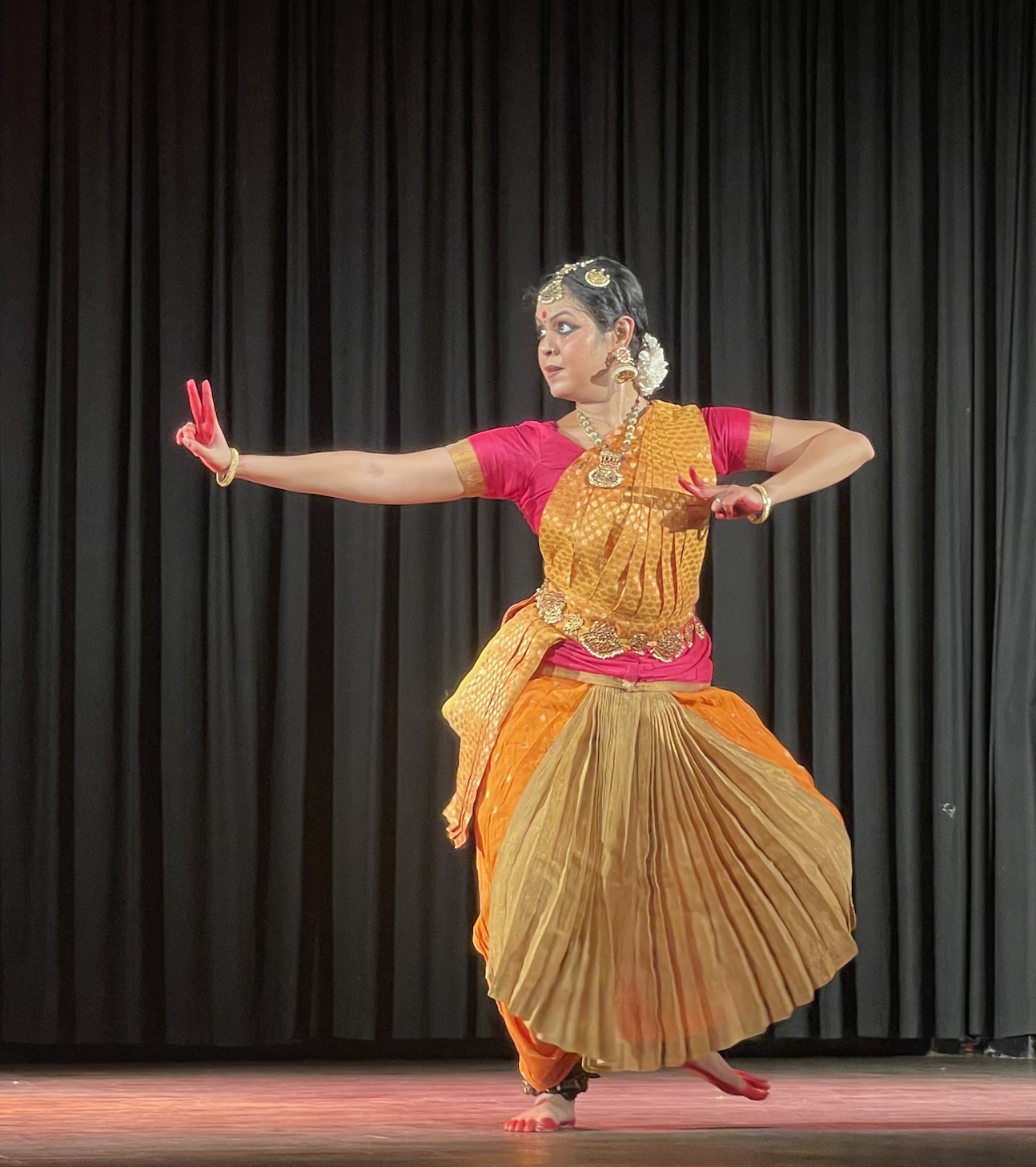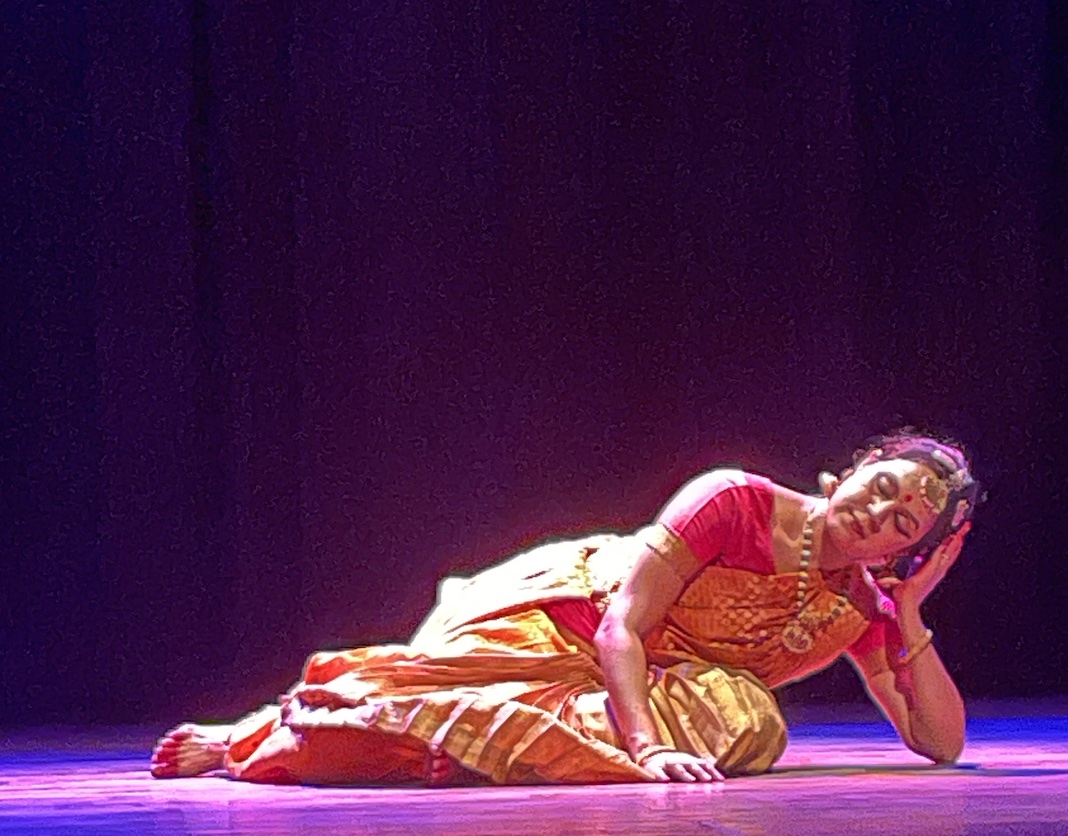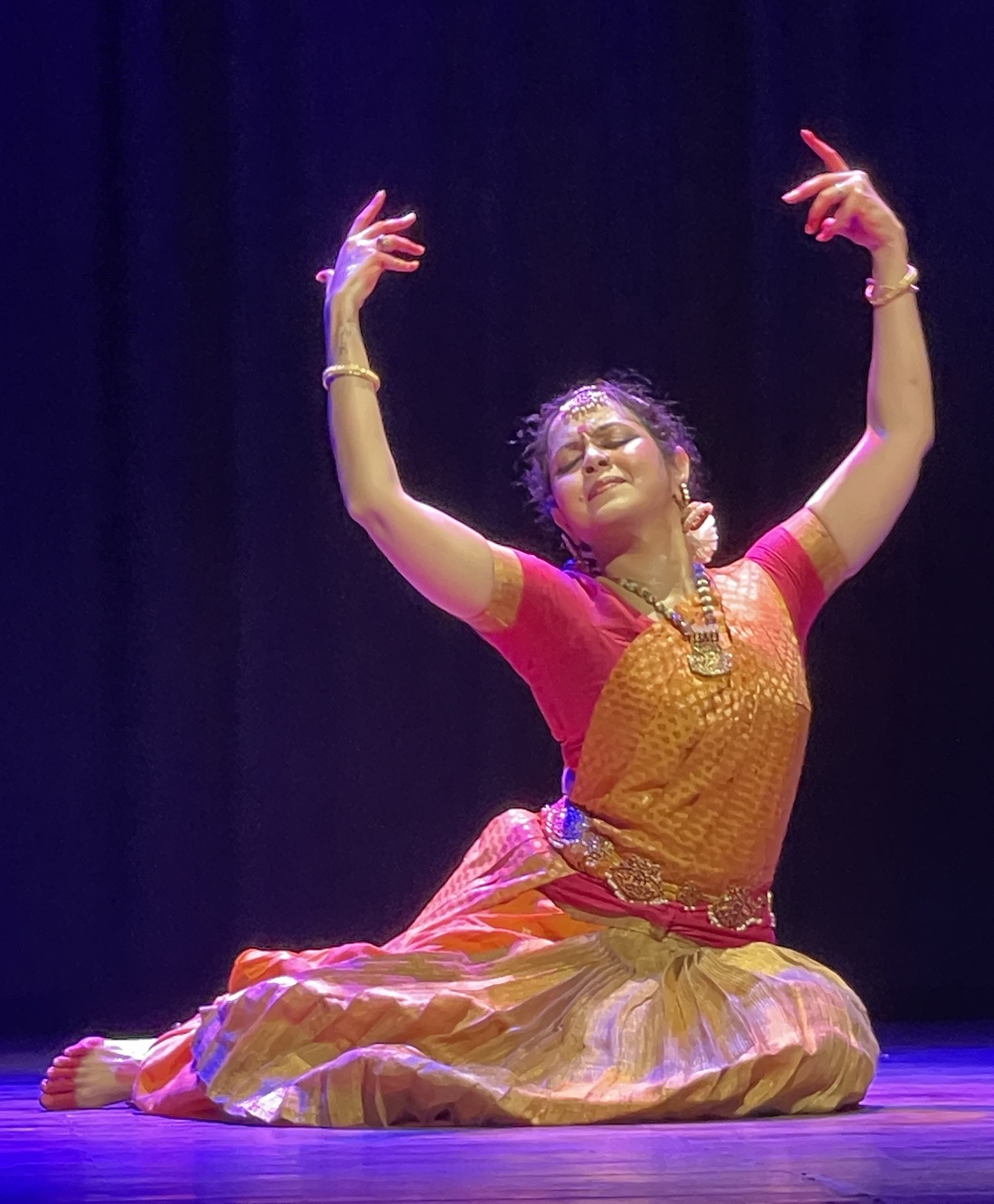Bharatanatyam: Arupa Lahiry Explores Aspects of Devi
Of the classical dance forms native to India, perhaps the most rigorous and disciplined as well as expressive is that of Bharatanatyam. With graceful and ephemeral movements of the hands and fingers, undulation of the hips and bending of the knees, and the expressive gazes in the eyes, its elegance and charm were embodied expertly by artist, Arupa Lahiry on Sunday October 8th at the Indian Council for Cultural Relations’ Tagore Centre at Calcutta.
There, Ms. Lahiry performed “Matrika – A Margam Exploring Devi.” A Margam is a traditional Bharatanatyam dance repertoire, which consists of certain components, weaved together to express a philosophical idea, set of notions, or narrative, revealing some truth about the self or the universe. It usually begins with an offering, then unfolds with a piece involving Abhinaya (drama, acting, or expression) and nritya (rhythm), then a Varnum, which combines these elements in a more elaborate way, and then ending with something quieter and more introspective.
Devi is the divine feminine, which is the source of kinetic energy in the universe. While embodying great power and fierceness, Devi is also feminine, tender and delicate, which is what Ms. Lahiri endeavoured to depict in her Margam.
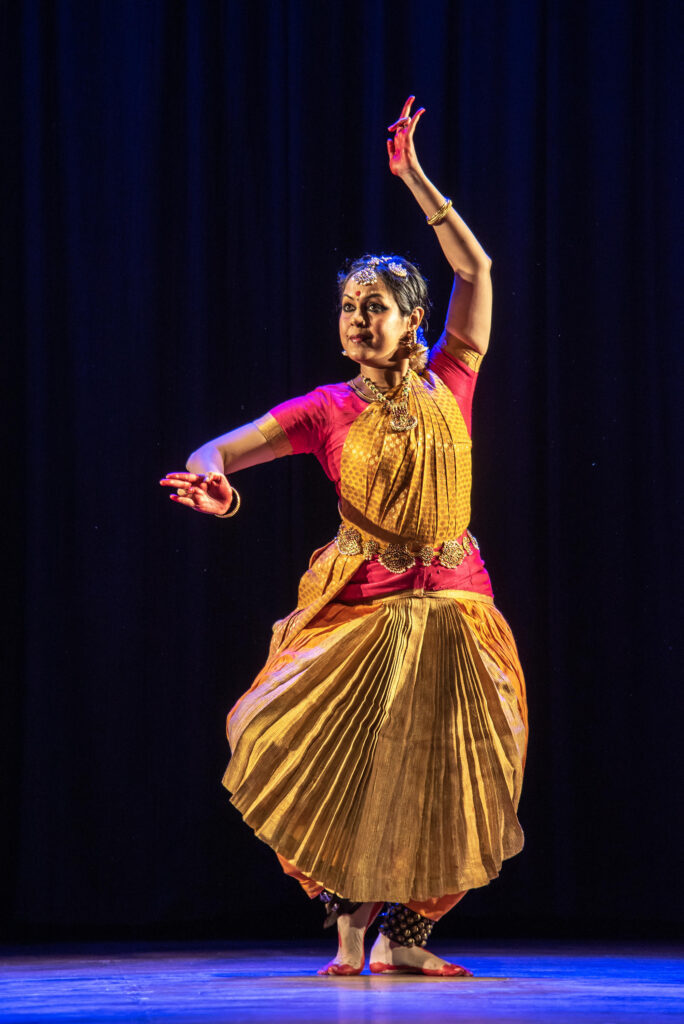
Arupa Lahiri performing a Varnum from “MATRIKA – A MARGAM EXPLORINNG DEVI” at ICCR. Calcutta – photo by Amlan Biswas
Elucidating the various aspects or pieces in her exploration of divine feminine, Ms. Lahiry explains her selection: “Piece 1 was an Anjali (or invocation) which was based on feminine movements followed by an Alarippu on 5.5 rhythmic cycle on Devi Durga. The next piece was one on Devi Saraswati. The third piece for the evening was on Devi Meenakshi followed by the Ashtapadi (or eight steps). Lastly, Radha is the Hladini Shakti (the power that evokes transcendental bliss in the heart of the aspirant) of Devi and hence I wanted to show a completely different aspect of the feminine unlike the trishul (or trident) carrying prototype we see mostly. Hence the attempt was to show a confident woman complete in her self.” In doing so, Ms. Lahiry was able to present a thorough exploration of the feminine, and not simply the fiercer aspects associated with the traditional depictions of Shakti.
Ms. Lahiry first started learning Bharatanatyam at age five, and like many of her peers, it began as a hobby to occupy her time in a constructive and artistic way. It became more serious to her later on, and right about the time she was studying English at Presidency College in Calcutta, she decided that the thing that was missing from her live was complete devotion to the artform of Bharatanatyam.
So, she decided to move to Chennai in Tamil Nadu, South India, and learn from Chitra Visweswaran, who runs the Chidambaram Academy of Performing Arts there. When asked about her choice of guru, her answer is almost childlike: “In my naive self I loved her unique dressing sense of costuming and the fact that she was beautiful.”
Coming from a musical tradition of Rabindra Sangeet, which has a rhythmical structure of sixteen beats or four fours, it was difficult for her to assimilate the complex structure of percussion in Carnatic music, which is the basis for Bharatanatyam. “The complicated rhythm cycle of Carnatic music baffled me and yet challenged me,” Ms. Lahiry says. “I come from the system where we were supposed to find our own answers, our gurus never sat and explained the 2+2 and hence I had to find the solution myself. Daily practice with a young mridangist, TA Mahadevan helped me to overcome it.” Slowly, she mastered it, and became a performer and teacher in her own right.
Ms. Lahiri practices the Vazhavur Bani form of Bharatanatyam, which is one of the original forms of the dance. It is more expressive than the other variations. The dancers who practice this style must also follow a particular dress code, a Panchagajan type sari with elaborate frills. Make-up forms an inextricable part of this style of classical dance. In movement, its distinctive features include rich Sringar elements evoking sublime emotions like love, adornment, beauty, and attraction, as well as soft facial Abhinaya and a wide range of dancing pace, elaborate movements and deep sitting positions among a variety of positions on the floor. These elements were on display with an ease and finesse in Ms. Lahiry’s performance that is beyond compare of many.
While much of the performance displayed the power of Shakti, the last piece, in particular, demonstrated Sringar between Radha and Krishna through use of soft movement of the eyes, eyebrows, stealing glances, and delicate movement of limbs. The erotic sentiment in separation is represented by anxiety, yearning, and feigning death to demonstrate the hurt. The happier side is exemplified when the subject achieves and is enjoying ones desires, acted by graceful looks and sweet words, smiles and pleasing and attractive gestures.
In Natyashastra, which is the theoretical text of storytelling, drama, and dance, often considered to be the fifth Veda or tome of knowledge of Hindu philosophy and culture, Sringar is described as one type of Rasa, literally flavour but meaning an inner reaction to a stimulus, evoking feeling and emotion. Rasa is something that emanates with the dancer but is absorbed by the audience. The audience feels what the dancer feels even if it is negative such as fear or disgust. Ms. Lahiri exprsses the range of rasas, which are generally four: erotic, heroic, terror, and disgust. Within that is longing both displayed by the devotee in worship and the lover in the process of before and after amorous bliss.
Indeed, Ms. Lahiry’s movements not only pleased the senses, and roused a myriad of emotions with its many fine details of movement and expression, but the magnificently controlled choreography was also extraordinarily well-suited to the subject.
On the subject, itself, when asked if Ms. Lahiry felt Bharatanatyam lacks modern storytelling, her answer is revealing. “Not really,” she responds. “Some things are good as they are.” And with that simple phrase, her art form is well encompassed.
Ms. Lahiry is also Regional Director (Vadodara) of the Indira Gandhi National Centre for the Arts, Ministry of Culture, Government of India.
- The many movements of Arupa Lagiri i perfnormig her Matrika program, a Margam Exploring Devi – photos by SB Veda
- The many movements of Arupa Lagiri i perfnormig her Matrika program, a Margam Exploring Devi – photos by SB Veda
- The many movements of Arupa Lagiri i perfnormig her Matrika program, a Margam Exploring Devi – photos by SB Veda
- The many movements of Arupa Lagiri i perfnormig her Matrika program, a Margam Exploring Devi – photos by SB Veda
- The many movements of Arupa Lagiri i perfnormig her Matrika program, a Margam Exploring Devi – photos by SB Veda
- The many movements of Arupa Lagiri i perfnormig her Matrika program, a Margam Exploring Devi – photos by SB Veda
- The many movements of Arupa Lagiri i perfnormig her Matrika program, a Margam Exploring Devi – photos by SB Veda
- The many movements of Arupa Lagiri i perfnormig her Matrika program, a Margam Exploring Devi – photos by SB Veda
- The many movements of Arupa Lagiri i perfnormig her Matrika program, a Margam Exploring Devi – photos by SB Veda
- The many movements of Arupa Lagiri i perfnormig her Matrika program, a Margam Exploring Devi – photos by SB Veda
- The many movements of Arupa Lagiri i perfnormig her Matrika program, a Margam Exploring Devi – photos by SB Veda
- The many movements of Arupa Lagiri i perfnormig her Matrika program, a Margam Exploring Devi – photos by SB Veda
- The many movements of Arupa Lagiri i perfnormig her Matrika program, a Margam Exploring Devi – photos by SB Veda
 The Global Calcuttan Magazine
The Global Calcuttan Magazine 